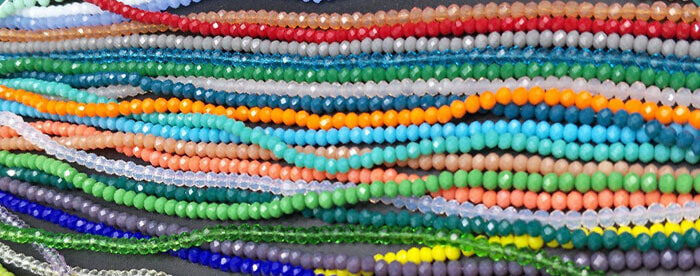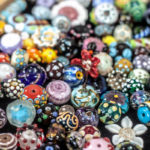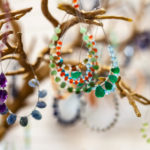One of the most beautiful, popular, and ancient types of beads is the Czech glass bead. You have probably encountered it during your search for beads and jewelry supplies for your projects. You may, however, not be familiar with the long history of these beads, nor their usefulness today. Here is a comprehensive look at these beads and jewelry supplies.
Czech beads predate the Czech Republic.
When we say that Czech glass beads are ancient, we mean that they originated long before the Czech Republic, after which they are named. In the 1550s, the Czech Republic was known as Bohemia. It was there that glass beadmaking sprang up, specifically in the cities of Jablonec, Stanovsko, and Bedrichov.
Production of glass beads began in ancient Egypt, and many cultures have successfully adopted the practice over the centuries. However, glass beads became particularly beloved and successful in Bohemia/Czech Republic because of the area’s abundant resources of water, quartz, and sand.
There were other factors that contributed to the success of glass beads. The Bohemian people (and later the Czech people) demonstrated a singular creativity and inquisitiveness that allowed them to experiment with the process of making glass beads. These experiments yielded techniques for perfecting glass beads that made the Czech beads famous for their beauty, variety, and consistently high quality.

Czech beads were originally created by cottage artisans.
The Czech Republic possesses a reputation as one of the world’s leading glass bead manufacturers. Its success, however, is a result not of big factories and stores, but of cottage artisans. Families would set up glass beadmaking in their cottages. Sometimes, the machinery would take the place of furniture in the small dwellings. Even after large jewelry manufacturing plants burgeoned, cottage artisans would provide the beads these plants used in their work.
Even today, the cottage industry is an essential link in the creation of Czech beads. Often, for example, families take the beads after they are produced and string them for the factories. This collaborative process creates income for these families and maintains the beads’ link to the small business environment in which they were originally created.
Czech beads are famous for their quality.
When looking for beads and jewelry supplies, you want high quality materials that will last a long time. You also want beads that are uniform and beautiful. The beads, after all, lend their beauty and durability to your work. The better the bead, the better the finished product.

“BEAD MAKING MACHINE.” BEAD COLLECTOR NETWORK, JULY 2012
This is why Czech beads are in such high demand. While they sometimes sell for significantly more than do other types of beads, artisans still snap them up in large quantities simply because they are great beads. In particular, they are known for their consistent shape, size, and beauty.
The Czech people perfected the art of glass beadmaking through experimentation and by adopting the latest manufacturing machinery and methods. Thanks to these centuries of experience and advancement, Czech beads are durable, reliably shaped, extremely smooth, and available in a huge array of shapes, sizes, and colors for any jewelry making project you have. From seed beads to large beads, you can find beautiful beads and jewelry supplies in the form of Czech beads.
Czech glass beads are made from pressed, fire-polished glass.
Two terms are important in understanding Czech glass beads. The first is pressed glass. Artisans create these beads by taking heated glass and pressing it into a mold. The glass, since it is so hot, takes the shape of the mold.
Once cooled, the bead can then be faceted into its finished shape. Artisans use machinery to polish the beads today, but originally, this process occurred by hand. The process of pressing glass into beads is as ancient as the process of bead making in the Czech Republic.
The second term is fire-polished. Typically, an artisan polishes a bead by hand or with machinery to make it smooth and shiny. Often, this process occurs by rubbing the bead repeatedly until all roughness wears away.
First polishing, however, uses heat to polish the bead. After faceting, the bead is heated. As it heats, the bead develops a smooth sheen. This sheen remains as the bead cools down. Fire polishing gives the bead its distinctive smooth feel and beautiful glow. It is also a more difficult technique to perfect, because the effect of the fire on the bead is more difficult to control.



